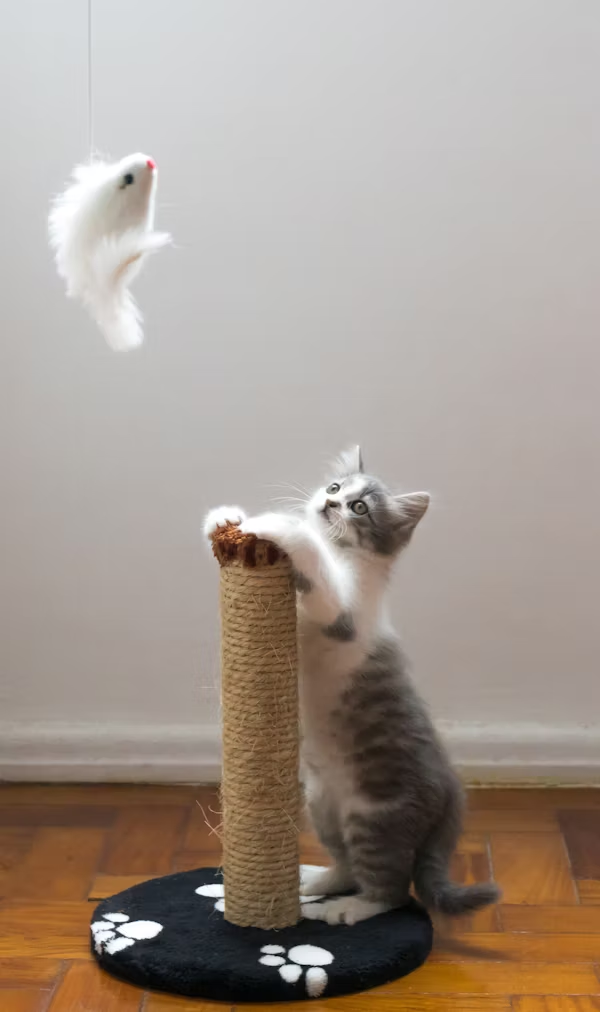Allergies can make owning a cat seem impossible, but fear not—there are several cat breeds known for being more suitable for allergy sufferers. These breeds are often referred to as “hypoallergenic,” meaning they are less likely to cause allergic reactions. In this guide, we’ll explore the top hypoallergenic cat breeds, their characteristics, and tips for managing allergies while enjoying the company of a feline friend.
Understanding Cat Allergies
Before diving into hypoallergenic cat breeds, it’s important to understand why some cats trigger allergies. Most cat allergies are caused by a protein called Fel d 1, found in cat saliva, skin, and dander (tiny flakes of skin). When cats groom themselves, they spread this protein onto their fur, which can then become airborne and trigger allergic reactions in sensitive individuals.
What Makes a Cat Hypoallergenic?
Hypoallergenic cat breeds generally produce fewer allergens than others. They may have less Fel d 1 protein in their saliva or skin or shed less dander. However, no cat breed is completely allergen-free. People with allergies should also consider other factors, such as the cat’s grooming habits and the environment in which they live.
Top Hypoallergenic Cat Breeds
1. Siberian
- Characteristics: Siberians are large, affectionate cats with a dense, water-repellent coat. Despite their long fur, they shed less dander and produce less Fel d 1 protein.
- Why They’re Hypoallergenic: Siberians are known for their low levels of Fel d 1 protein compared to other breeds.
- Grooming: Regular brushing helps manage shedding and dander.
2. Balinese
- Characteristics: Often referred to as the “long-haired Siamese,” Balinese cats are sleek and elegant with a silky coat. They are known for their playful and affectionate nature.
- Why They’re Hypoallergenic: Balinese cats produce less Fel d 1 protein and have a lower tendency to shed.
- Grooming: Minimal grooming is required, but regular brushing helps maintain their coat.
3. Bengal
- Characteristics: Bengals have a unique, leopard-like appearance with a short, sleek coat. They are energetic and love to play.
- Why They’re Hypoallergenic: Bengals shed less dander due to their short coat and have lower levels of Fel d 1 protein.
- Grooming: Their short coat requires minimal grooming.
4. Devon Rex
- Characteristics: Devon Rex cats have a distinctive appearance with large ears and a curly, soft coat. They are known for their playful and mischievous personalities.
- Why They’re Hypoallergenic: Devon Rex cats produce less Fel d 1 protein and shed less dander due to their unique coat.
- Grooming: Regular grooming helps keep their coat healthy and manage dander.
5. Cornish Rex
- Characteristics: Cornish Rex cats have a soft, wavy coat and a slender, elegant build. They are known for their playful and active nature.
- Why They’re Hypoallergenic: Like the Devon Rex, Cornish Rex cats produce less Fel d 1 protein and shed less dander.
- Grooming: Their coat requires minimal grooming, which helps reduce allergens.
6. Sphynx
- Characteristics: The Sphynx is a hairless breed known for its wrinkled skin and friendly, outgoing personality. Despite being hairless, they still require regular care.
- Why They’re Hypoallergenic: Sphynx cats produce less dander as they lack fur, which can help reduce allergic reactions.
- Grooming: Regular baths are necessary to remove oils and dander from their skin.
7. Russian Blue
- Characteristics: Russian Blues are known for their plush, blue-gray coat and striking green eyes. They are typically reserved but affectionate with their families.
- Why They’re Hypoallergenic: Russian Blues produce lower amounts of Fel d 1 protein, making them a better choice for allergy sufferers.
- Grooming: Their dense coat benefits from regular brushing to manage shedding and dander.
Tips for Managing Allergies with Cats
- Choose the Right Breed: Opt for hypoallergenic breeds that produce fewer allergens and shed less dander.
- Maintain Cleanliness: Regularly clean your home to reduce allergens. Use HEPA filters in your vacuum and air purifier.
- Groom Your Cat: Regular grooming can help manage shedding and dander. Brush your cat frequently and consider using a damp cloth to wipe down their fur.
- Create Allergy-Free Zones: Designate certain areas of your home as cat-free zones, such as bedrooms, to reduce exposure.
- Wash Your Hands: Always wash your hands after handling your cat to prevent transferring allergens to your face or other areas.
- Consult an Allergist: If you have severe allergies, consult with an allergist for personalized advice and treatment options.
Conclusion
Owning a cat with allergies can be manageable with the right breed and proper care. Hypoallergenic breeds like the Siberian, Balinese, Bengal, Devon Rex, Cornish Rex, Sphynx, and Russian Blue offer options for those sensitive to cat allergens. By choosing a breed known for producing fewer allergens and following tips to manage allergens in your home, you can enjoy the companionship of a feline friend while keeping your allergies under control.











Leave a Reply